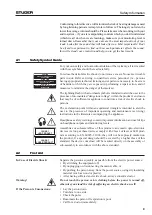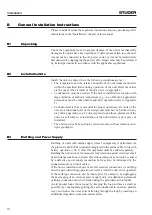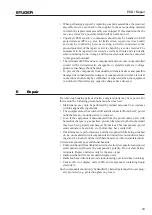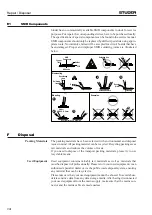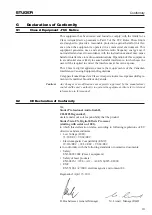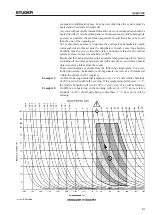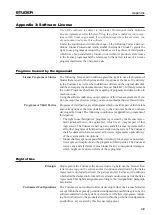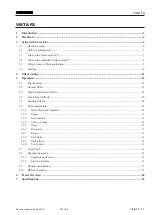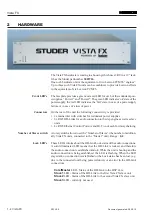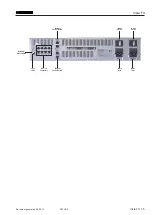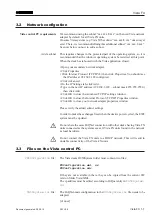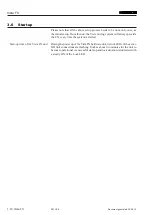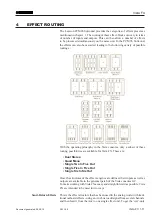
XI
evaporation (sublimation) may be expected; otherwise the system must be
heated and dried while switched off.
A system without visible internal formation of ice or condensation should be
heated up with its own heat dissipation, as homogeneously (and subsequently
as slow) as possible; the ambient temperature should then always be lower
than the one of the outgoing air.
If it is absolutely necessary to operate the cold system immediately within
warm ambient air, this air must be dehydrated. In such a case, the absolute
humidity must be so low that the relative humidity, related to the coldest
system surface, always remains below 100%.
Ensure that the enclosed air is as dry as possible when powering off (i.e. before
switching off in winter, aerate the room with cold, dry air, and remove humid
objects such as clothes from the room).
These relationships are visible from the following climatogram. For a con-
trolled procedure, thermometer and hygrometer as well as a thermometer
within the system will be required.
Example 1:
An OB-van having an internal temperature of
+20 °C
and a relative humidity
of
40%
is switched off in the evening. If the temperature falls below
+5 °C
,
the relative humidity will rise to
100% (7 g/m³)
; dew or ice will be forming.
Example 2:
An OB-van is heated up in the morning with air of
+20 °C
and a relative
humidity of
40%
. On all parts being cooler than
+5 °C
, dew or ice will be
forming.
Appendix





